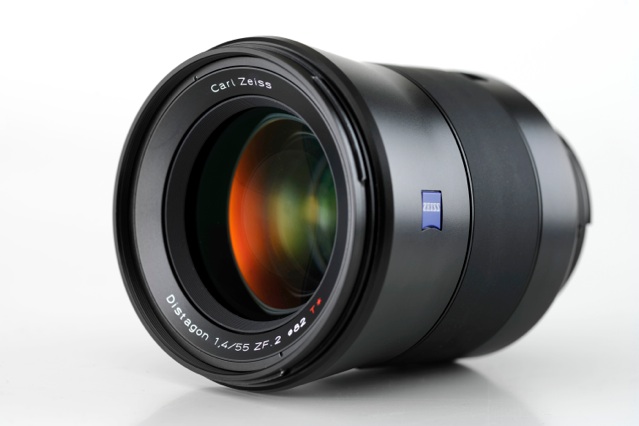
Zeiss has announced its new 55mm f/1.4 Distagon T* lens for Canon and Nikon mounts. The new lens is first model of a new product family from Zeiss.
“Thanks to a newly developed optical design, this lens is superior to conventional full-frame lenses, and it achieves with powerful full-frame, full-format cameras an image performance that until now has only been seen with medium-format systems. The first prototype of this new range will celebrate its world debut at photokina. The family of lenses is expected to be on the market in the second half of 2013 for EF bayonet (ZE) and F bayonet (ZF.2).” -Zeiss Press Statement
Along with the announcement of this new lens, Zeiss revealed that (at Photokina 2012) it would be showing a sneak preview of “a new family of autofocus lenses for mirrorless system cameras (CSC) that will most likely be available in mid-2013 . . . . We are convinced that as a result of the new and very high-quality cameras and lenses that are coming onto the scene, this market will become even more important. We see lots of potential, which is why we will offer more products for this target group in the future . . . .”


Strange, rather stupid headline: “mirrorless lenses”. Never seen a Zeiss lens WTIH a mirror.
Should be lenses for mirrorless camera’s.
Sorry for the confusion. Just trying to keep headines concise.
I’m a simple picture taker. I like things simple. The simpler, the better. I perfer a lens to be a lens, and not a machine. With a 35mm slr camera, you understood what lens you were using. To photograph wild life or sports, you used a telephoto lens 200, 300, etc. To photograph portraits, you used a short telephoto lens like 100 or 105mm. Now things are complex and expensive. There’s the crop factor 1.5 x 5omm= 75. So now the 50mm lens is a 75mm lens. And then there is lenses with motors inside for auto-focus. Soon there’ll be robots taking pictures and not a real photographer. Didgital is nice. It allows you to bounce a flash off the ceiling and get a correct exposure without having to calculate and hope the exposure is right. I’m glad I started with film. If I want to capture the color of a sunset, I just leave the white balance set for a sunny day. Sodium vapor street lights, sunny day. I know, a lens can cost you…1,2, even $3000. And these didgital cameras are heavy. I’m a picture taker, and use everything 4 x 5 film cameras, medium format film cameras and yes even didgital.
I wonder how many of us really can tell the difference between a $400 lens and a $2000 lens, same goes for the cameras. I see images shot with a NEX 5N and a Nikon d300 and dam if I or any of my students can tell the difference. I think we have been sold a bill of goods. I am not saying the image from a $200 point and shoot is as good as a canon T3i but once you get to a APS or mFT sized sensor there seems to be very little difference in the final image. Yes, focusing may be faster, bigger buffers, faster lenses, etc. , but the final image, hard to tell
Jerry
That’s a valid point for photos BOTH platforms are CAPABLE of taking. I would suggest that the photogs at the Olympics would be completely unable to do their jobs with NEX 5N…
Once you start taking astronomy star field images and wanting pin point stars corner to corner, without coma, & chromatic aberrations at maximum aperture then these quality lenses do come into their own. I can pick a $200 lens from a $2000 lens any day!
Regards,
Shevill
Southern Cross Observatory – Tasmania 42 South